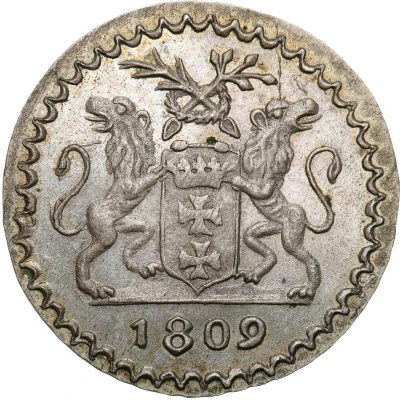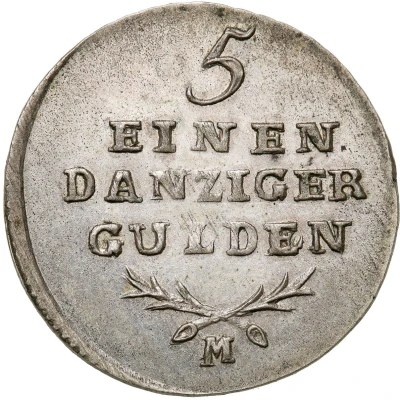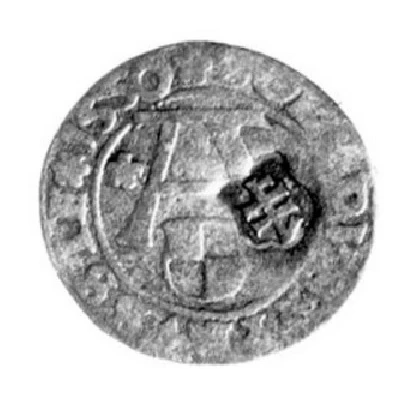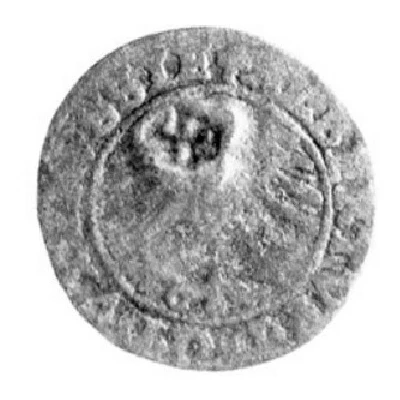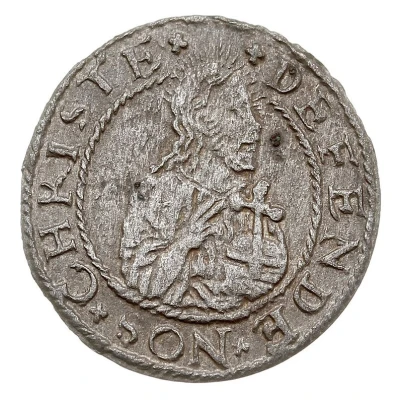
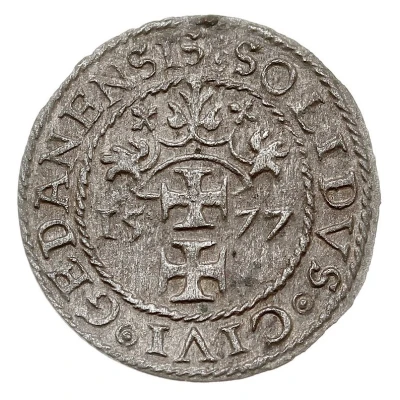

Schilling Siege coinage
1577 year| Billon (.125 silver) | 1.13 g | 20 mm |
| Issuer | City of Danzig (Polish States) |
|---|---|
| King | Stephen Báthory (1576-1586) |
| Period | Danzig rebellion (1575-1577) |
| Type | Standard circulation coin |
| Year | 1577 |
| Value | 1 Schilling = ⅓ Groschen (1 Szeląg = ⅓ Grosza) |
| Currency | First Złoty (1577) |
| Composition | Billon (.125 silver) |
| Weight | 1.13 g |
| Diameter | 20 mm |
| Shape | Round (irregular) |
| Technique | Hammered |
| Demonetized | Yes |
| Updated | 2024-10-07 |
| Numista | N#96146 |
|---|---|
| Rarity index | 97% |
Reverse
The emblem of the city, a crown and two crosses below it. The first half of the date is on the left, next to the first cross, and the second half of the date is on the right.
Script: Latin
Lettering: SOLIDVS•CIVI•GEDANENSIS
Unabridged legend: SOLIDVS CIVITAS GEDANENSIS
Translation: Solidus (or: Shilling, Szeląg, Schilling) City of Danzig.
Edge
Plain
Comment
Note: This coin was minted during the Siege of Gdańsk in 1577. During the election of the Polish king, the candidate from Transylvania (Stephen Báthory) won, but the city didn't want to accept it. The magistrate voted in favour of the Austrian candidate, Maximillian II, as he promised the city more priviliges than Báthory. This would eventually lead to a conflict between the Polish-Lithuanian Commonwealth and the city of Gdańsk.
While the coin is silver, it was actually minted with silver of very bad quality. The fineness was described as 2/16, meaning 12.5% or a hallmark of 125 silver. This is why most coins were found in a very bad state.
The mintage isn't known, but according to estimates about 601-3000 pieces survived until the present day.
There are a few different (likely six) types of this coin, which usually differ by the symbol at the top of the emblem. The most common type is the one shown below, minted by Caspar Goebel, but there's also a type minted by Tallemann. It's usually of worse quality than the others, but only some have a different symbol, usually a cross instead of a colon. Despite running the mint from October 14th, these were minted for quite a short time, somewhere between August 23rd and September 14th 1577.
Kopicki 7387
Price:
Picture: © WCN
Interesting fact
The Schilling coin from the City of Danzig (now Gdańsk, Poland) was used as a form of emergency currency during a siege in 1577. The city was under attack by the Teutonic Knights, and the regular coinage was not available. To address this issue, the city authorities decided to mint their own coins using available materials, including billon, which is a mixture of silver and other metals. These coins were called "Siege coins" and were used as a temporary solution until the regular coinage was restored. The Schilling coin was one of the denominations minted during this time, and it remains a unique and interesting piece of numismatic history.
